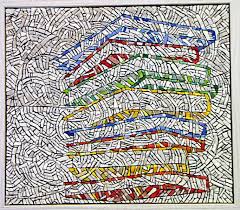Accommodations For Students In All Content Areas
When we think of reading issues like dyslexia, we often only consider how to help students be successful in their language arts classes. However, many learning issues that are related to dyslexia can impact a student’s performance in other academic areas as well. Students with reading difficulties need to have the appropriate accommodations and scaffolds in place so they can truly thrive in all environments.

Math: For many students, accommodations needed to be successful in math classes can be overlooked because we often do not think of dyslexia as impacting performance in math. This could not be further from the truth. Many students who struggle with reading also struggle with rote memory issues. This can make memorizing math facts very challenging and hinder their ability to complete higher-level problems. Often, these students can perform more complex mathematical calculations but their inability to memorize multiplication facts makes it nearly impossible for them to do so in an efficient manner. One way to support dyslexic students in math classes is to give them references for math facts. This may include multiplication charts, number lines, or even calculators to aid in solving memory-based math problems.
Another simple and easy to implement math accommodation is to allow students to use graph paper. Often students who struggle with reading and writing will have trouble lining up problems and organizing their work. Graph paper provides a way for them to line up their numbers so that they can solve problems correctly. If you are a teacher who wants to try graph paper with your students, make sure to teach them how to use it correctly. Like any other math tool, it is only effective if students know how to use it to help them organize their work.
You may also notice that many students have trouble with word problems. You can accommodate them by allowing the problems to be read to them. You can also teach them critical reading skills as they relate to math. Things like finding key information and coding problems using boxes and circling key words can help students with reading difficulties be more successful in solving word problems. If you are a teacher using this strategy, teach students how to find, code, and use essential information in word problems. It takes time to teach a consistent system, but it is extremely helpful for all students, especially those who struggle with reading.
Social Studies: As children get older, this content area becomes very reading intensive. Make sure that all teachers are following reading goals and accommodations for all students. These may include extra time on assignments or having audio options for grade-level text. Teachers can also re-write complex passages to an easier reading level but still include all key information.

If you are a teacher and want to try re-writing text to make it more accessible to students who are not reading at grade-level, this can often seem like a daunting task. To make it more manageable, first decide on the main idea. Ask yourself “What do I want students to take away from this text?” If you are teaching the revolutionary war it might be something like “There were many important battles in the American Revolution.” If this is the case, you are going to type out this sentence somewhere in the beginning of the text. Make the main idea obvious for students who struggle. Then you will add in details from textbook or other text that you are using for reference. Break down complex sentences. Rather than stating “The battles of Lexington and Concord were crucial battles that showed the British that the Americans were a force to be reckoned with,” you can make this same idea two simple sentences. “The battles of Lexington and Concord were critical battles. They showed the British that the Americans were able to fight.” The important thing here is not to create a literary masterpiece but to make the text more accessible to student who struggle with reading. Once you finish, you can turn on readability in your word processor and it will give you an approximate grade level of the final text.
This may seem like a daunting task, but the more you practice the easier it will become. Additionally, with 1 of every 5 students having dyslexia, I guarantee you will have more students in the future who have trouble with grade-level reading. You can use these resources for years to come and share with colleagues. The benefits to students are immense as it allows them access the content without their reading abilities hindering them.
Another accommodation that can help students who need reading intervention is to allow them use graphic organizers to sequence key events. A hallmark of dyslexia is difficulty sequencing so using a graphic organizer consistently can help them understand and internalize the content more efficiently.
Science: Like Social Studies, this subject can be quite reading intensive and difficult for students who are not reading at grade-level. One way to help students with dyslexia be more successful in science is to pre-teach all content specific vocabulary using visual, auditory, and kinesthetic processes before asking them to read it in text. Teachers may even consider having them make their own dictionary of science related words with pictures and drawings to help them remember the vocabulary.

Another way to make science more accessible to students with reading difficulties is to break down directions for experiments into multiple parts. Children with dyslexia often have issues with sequencing multi-step directions. Breaking directions down into simpler steps can help them be more successful.
Science teachers may also try using graphic organizers for them to categorize, classify, or sequence what they are reading. Having a consistent way to organize information can help them when they need to recall facts or when they are completing a reading assignment.
Another way to help students with dyslexia and other reading difficulties in a science class is to find audio books of their text. Often, science text is complex and above the reading level of even proficient readers. Having audio options available can help ensure that students with reading issues are still able to access the content. If you teach science, you may also want to re-write some of your textbook at a lower reading level. Check out the directions in the social studies section for some tips on how to do this.
Although we may traditionally think of dyslexia as primarily a reading issue, it can and does often affect all academic areas. By pushing for accommodations in other areas, you can help your child be more successful. As a teacher, you can help your students achieve in your classroom by mitigating the role of their reading difficulty and providing them access to the curriculum.
If you have academic performance concerns about your child or a student, Structured Literacy Intervention (also known as the Orton-Gillingham approach) can help with reading success. Contact us today for more information for yourself or to pass along to parents.
Our online program is effective reading intervention that fits your schedule.
Becky WelschRW&C, LLC
www.rwc4reading.com
Becky Welsch has a Master’s degree in K-8 Education. She is certified to teach in the state of Arizona and has special endorsements in the areas of English Language Learners and Reading.
Images from pexel.com
